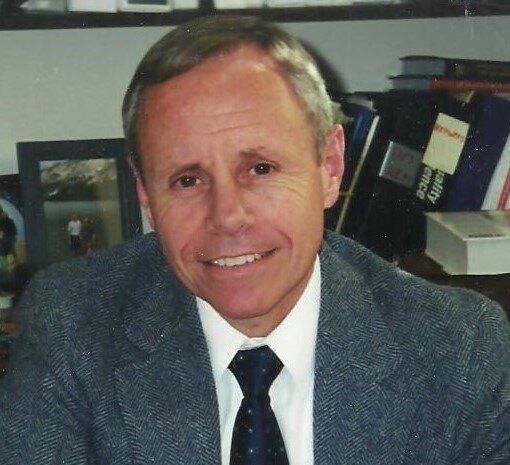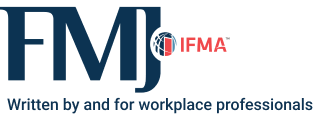Book Excerpt
Leadership in Managing Facilities

The book “Leadership in Managing Facilities: A One-Year Journey,” published in March 2023, provides real-life experiences, challenges and tips on how to be a successful facility manager. This book of 31 short chapters reinforces in story form the more extensive FM books on planning, organizing, staffing and controlling facility management organizations.
One Sunday, while he read the local newspaper, Frank Mitchell spotted a job at a university for their director of facilities management. He submitted his application and curriculum vitae. He received a call to come for an interview. After several positive and interesting interviews, Frank enthusiastically agreed to the university job offer.
Frank is a middle-aged administrator. He is confident, organized and attentive to details. He approaches each day with a can-do attitude. He thrives on the daily challenges, excitement and mental stimulation provided by the job and the people with whom he works.
Frank’s first day included introductions to various university department heads. He also briefly met with his managers and supervisors and asked many questions. One comment struck him: “Employees worked 7:30 a.m. to 4 p.m., Monday through Friday.” Later he was sitting at his desk when, at 5:25 p.m., the lights went out. Frank looked out the window and saw nothing but blackness — no lights. This was January when darkness came early. He knew this was not good. This was Frank’s introduction to his new job. Remembering employees left at 4 p.m., he called out to George Herman, his deputy, and groped his way to George’s office. He also noted there were no emergency lights in the office! George discovered the utility company had lost a generator at its plant across the river. The utility company was working on getting the backup generator online and expected to have power back within one hour. Frank was impressed with George’s follow-up investigation.
On his way home Frank contemplated the meetings and events of his first day. He decided to develop a plan that would provide him with focus and direction. It would be a roadmap he could follow and adjust to help him navigate the job’s complexities.
His plan would include getting to know many of the 350 employees by name. Essentially, the concept of managing by walking around (MBWA) explains that managers who get out of their offices and walk around meeting and speaking with employees are more successful; they build trust and credibility. Frank liked the concept. He had success with this in previous jobs.
The next area of importance to Frank was the department’s policies and procedures. A facility management organization needs good management tools, such as policies and operating procedures, to navigate the myriad of issues that surface daily. Policies and procedures should be well-coordinated and provide guidance on how to handle various issues on a consistent basis. Frank knew that policies are guidelines focused primarily on organizational activities that should or should not be performed. Procedures, on the other hand, focus on the process of getting something completed and are more narrative in nature than policies.
Incorporated with policies and procedures is safety. One of Frank’s mantras is “Safety is number one.” A safe workplace for employees, staff, faculty, students and visitors is paramount. To achieve a safe building or campus, a good department training program for technicians and managers must be implemented.
Frank believes knowledge and training are important. Equally important is encouraging employees to think through challenges creatively and calmly. He recalled an incident that occurred a few years earlier involving a sprinkler system in a barracks. Soldiers were playing frisbee in the hallway. The frisbee clipped the sprinkler head. The fire alarm alerted the public safety office, who then contacted the night maintenance technician. When the technician arrived and saw the amount of water being discharged, he panicked. He stopped thinking clearly. The technician called Frank at home and explained the situation. Frank instructed the technician to calm down and think about where the shutoff valve would be located. When the technician replied that he didn’t know, and expressed concern about there being so much water, Frank suggested he check the stairwell. Soon after, the technician reported to Frank that he found and shut the valve, but the water was still running. Following Frank’s prompts, the technician indicated he was on the third floor of five. Frank then led the technician to think about what he had just explained and realized there remained two floors of water in the pipe above; therefore, the water would continue until it got to his level.
Developing an overall department strategic plan was critical. But before he could start developing such a plan, he needed to know both the assets and their condition. He wanted to review the physical asset inventory. Frank knew that buildings change; equipment becomes obsolete or breaks down and eventually has to be replaced. He asked Jim Askew (the asset manager) to see the asset register and inventory. Jim responded that, when he took over his current position, there was no register and inventory. He has been trying to develop one himself. Jim’s effort was commendable, but Frank was frustrated, knowing that without a good asset management database, an effective facility strategic plan could not be developed easily.
Frank also met with other department heads, including the director of design and engineering, the director of administration and budget, and the director of utilities. Understanding how capital projects were initiated, designers selected, construction contracts administered, contract work inspected, and documents archived for future reference is important. He knew from experience that it took one to three years for a major capital project to be programmed, planned, designed, constructed and commissioned. On larger projects, it could take longer. Having learned that design and engineering held weekly meetings to review projects, Frank decided to attend them. This would provide an opportunity to get to know all 10 project managers and the potential problems with each ongoing project. Those problems could ultimately impact the operations and maintenance of that facility. He also wanted to know the archivist. The archives contained all the past and present building designs, record drawings (sometimes called as-built drawings), operations and maintenance manuals, warranties and contracts for various projects.
As Frank was speaking with several project managers, he overheard a discussion concerning an ongoing construction project. The contractor had submitted a request for substitution of a piece of equipment and the project manager was considering approving. Frank couldn’t help himself. He chimed in that substitution should never be allowed unless reasonable payment credit is given by the contractor. His experience was that contractors seldom want to credit the payments when they make substitutions. He told the project managers they may also see a contractor specify that a piece of equipment to be installed is approved equals, which really means cheaper.
Frank obtained a list of new ongoing capital construction projects. He decided to walk through the projects with each project manager. As he had done within his department, he wanted to know the project managers and understand their strengths, weaknesses and challenges.
Frank had another thought and told the director of design and engineering that O&M also needed to be involved with developing the final project punch list and signing off on the list. As a project comes to an end, a list is compiled naming deficiencies, items requiring immediate attention and items not conforming to the contract specifications. In both smaller and million-dollar projects, a punch list can have hundreds of items requiring correction — sometimes thousands in larger projects. These items must be corrected or completed by the contractor before the final payment is made and the project is turned over to operations and maintenance.
Facility management is constantly evolving. Rapid advancements in technology have had a sizable impact on how facilities are managed. With older employees retiring, their legacy knowledge must somehow be captured. Younger employees are looking for companies that welcome open-mindedness and allow them to speak their minds. As a result, organizational culture is coming to the forefront because FM leaders have a workforce made up of various generations: baby boomers, Generation X, Millennials and Generation Z. They all think differently. Taking these cultural issues into account, Frank thought about how important it was for all managers and supervisors to understand and appreciate each generation’s work styles and beliefs. Understanding the four generations and how they work together would be critical to job success and quality service. This meant FM employees would need to let go of old ways of performing work. It would mean changing habits. Frank reasserted that training was essential. For change to be effective, there has to be positive, continuous reinforcement and feedback. Every possible communication channel should be used, including newsletters, weekly notes, town hall meetings and a dedicated website. Frank placed Rona, his administrative assistant, in charge of scheduling quarterly town hall meetings, developing the newsletter and ensuring it was distributed to all employees. In addition, there has to be ongoing training for the managers, supervisors, foremen and employees on how to communicate with each other while respecting their differences.
Next Frank addressed hiring practices for new employees. Frank learned managers and foremen interviewed job candidates by themselves and that candidates were often selected based on friendships or family ties as opposed to qualification and suitability for the position. Frank was determined to change that practice.
He stated that going forward he wanted a panel of three to five people, with at least one woman on the panel. George countered, asking why they needed a woman on the interview panel given that they have no technical experience. Frank told George he was incorrect, noting that women frequently attend technical trade schools and were just as qualified as men. Furthermore, he theorized that women frequently look at applicants as to whether their personalities would fit in with the organization culture, values and operational methods. By contrast, men were often more focused on whether the applicant could do the job.
Frank then offered another example from a previous position where they needed to fill a vacancy in the solid waste and recycling section. When a female applied and was interviewed, Frank had first been skeptical, but decided to take the risk and hire her. She would be the only woman in the crew of 20 men. The work was dirty and physically taxing. The men did not care about their appearance; they were unshaven, scruffy, disheveled and used foul language. Once this woman joined the section, the crew cleaned up both themselves and the shop. Her presence had a major positive impact on the functioning of this section. Frank added that, despite her size, she more than kept up with the work.
Managing the operations and maintenance of facilities is critically important for every organization. Facilities are becoming smarter and more sophisticated, which means facility managers also have to become smarter and better trained. They need to understand the legal, health and safety requirements of operating and maintaining their facilities. Frank told his managers and supervisors, “Life is a journey. The road of life events is not straight. It has many twists and turns. Hopefully, we all learn from mistakes we make and the challenges we face along the way.”

Dr. Richard Payant spent 22 years as director of facility management at a major university, and 23 years with the U.S. Army Corps of Engineers. He has established and directed public works and operations and maintenance programs. He teaches in the George Mason University Facility Management certificate program.
Read more on Leadership & Strategy
Explore All FMJ Topics









